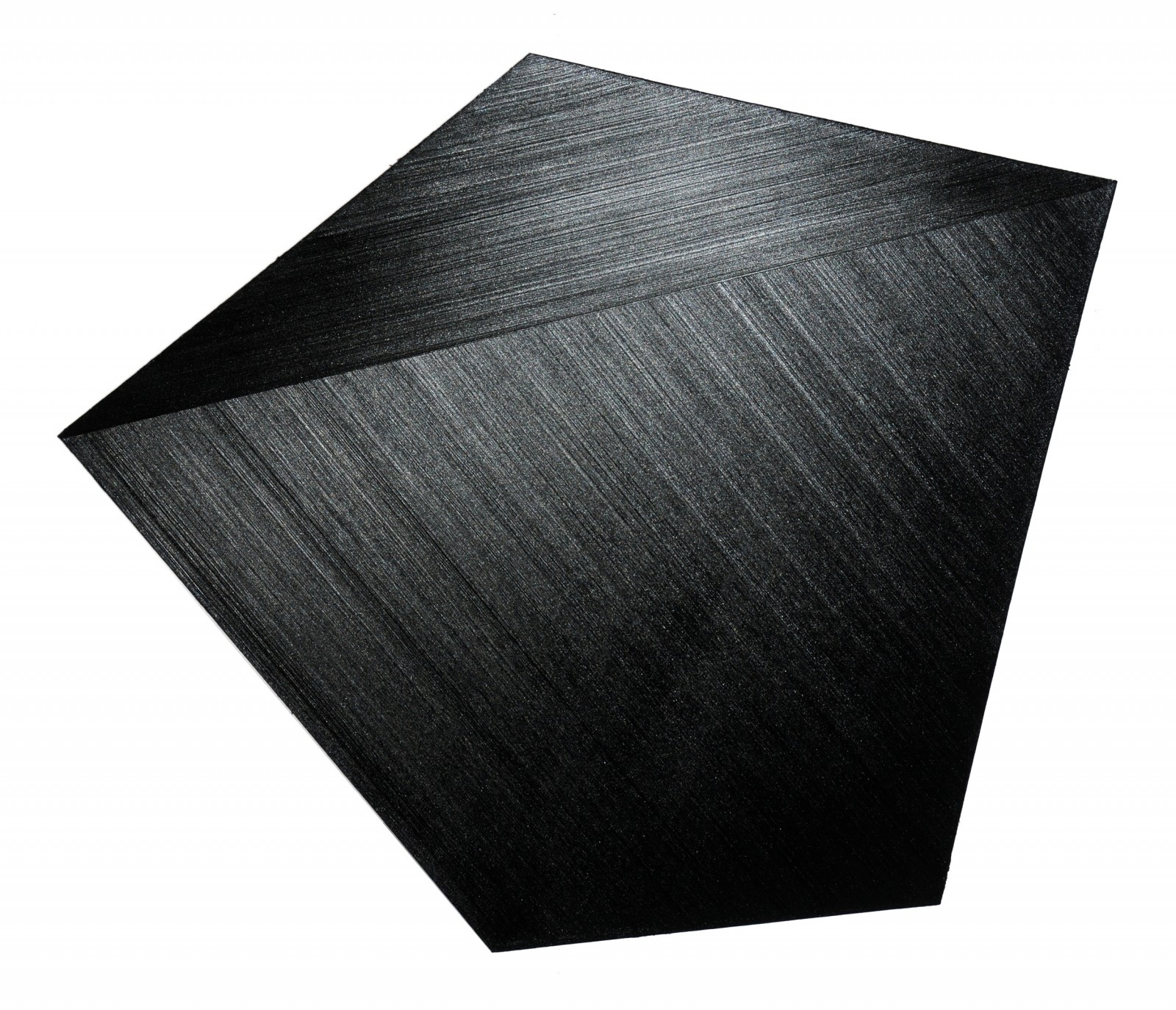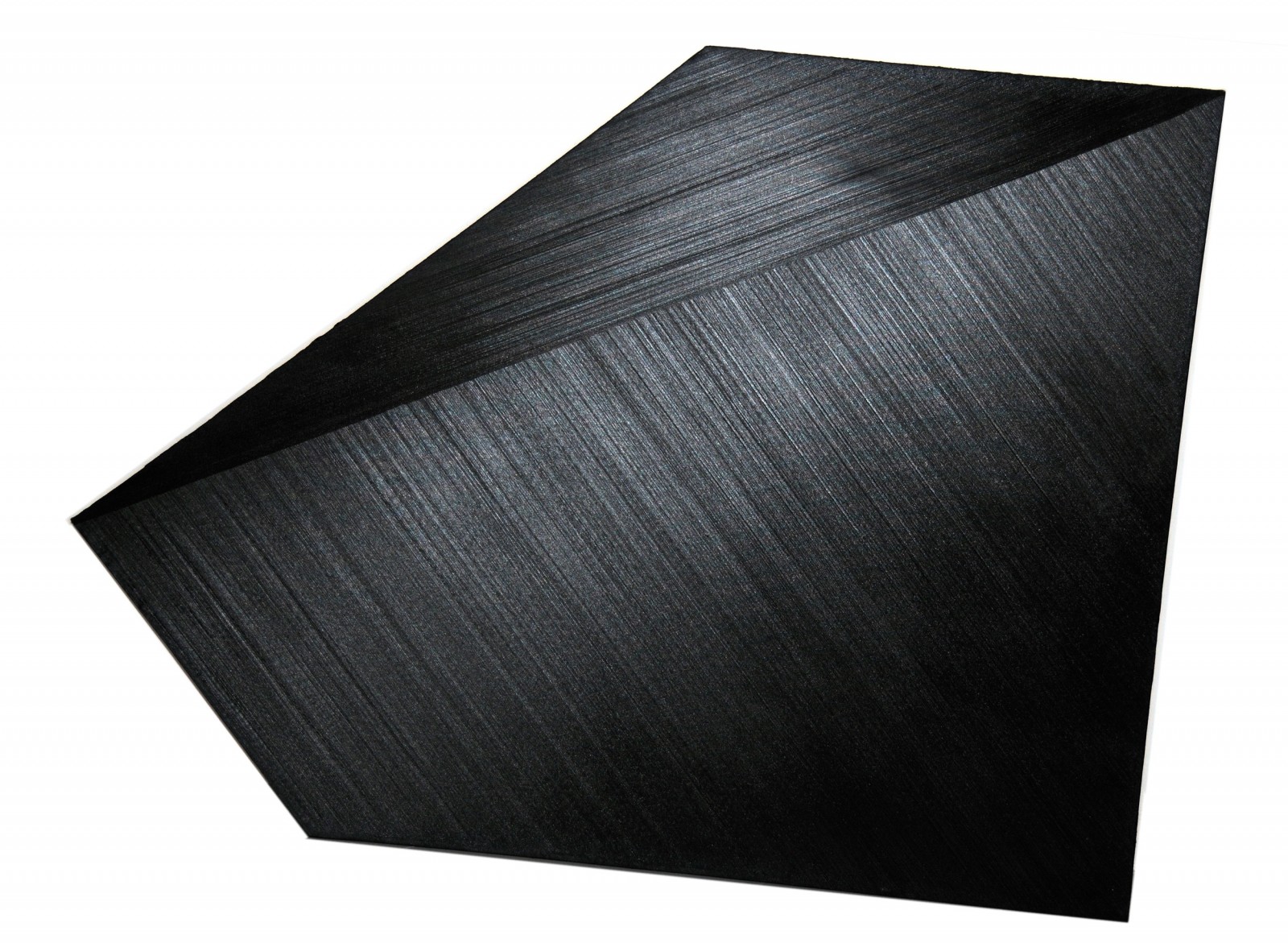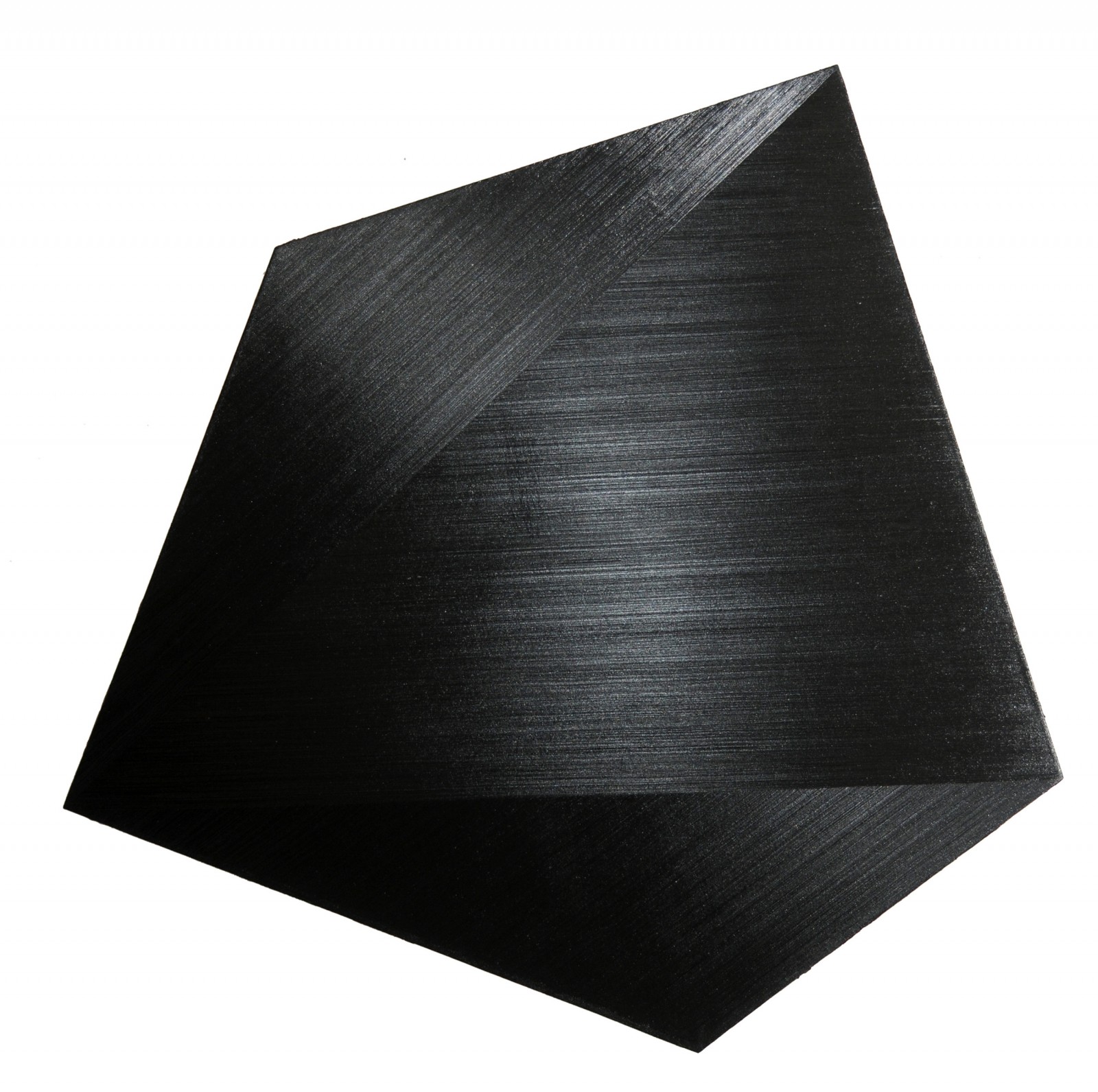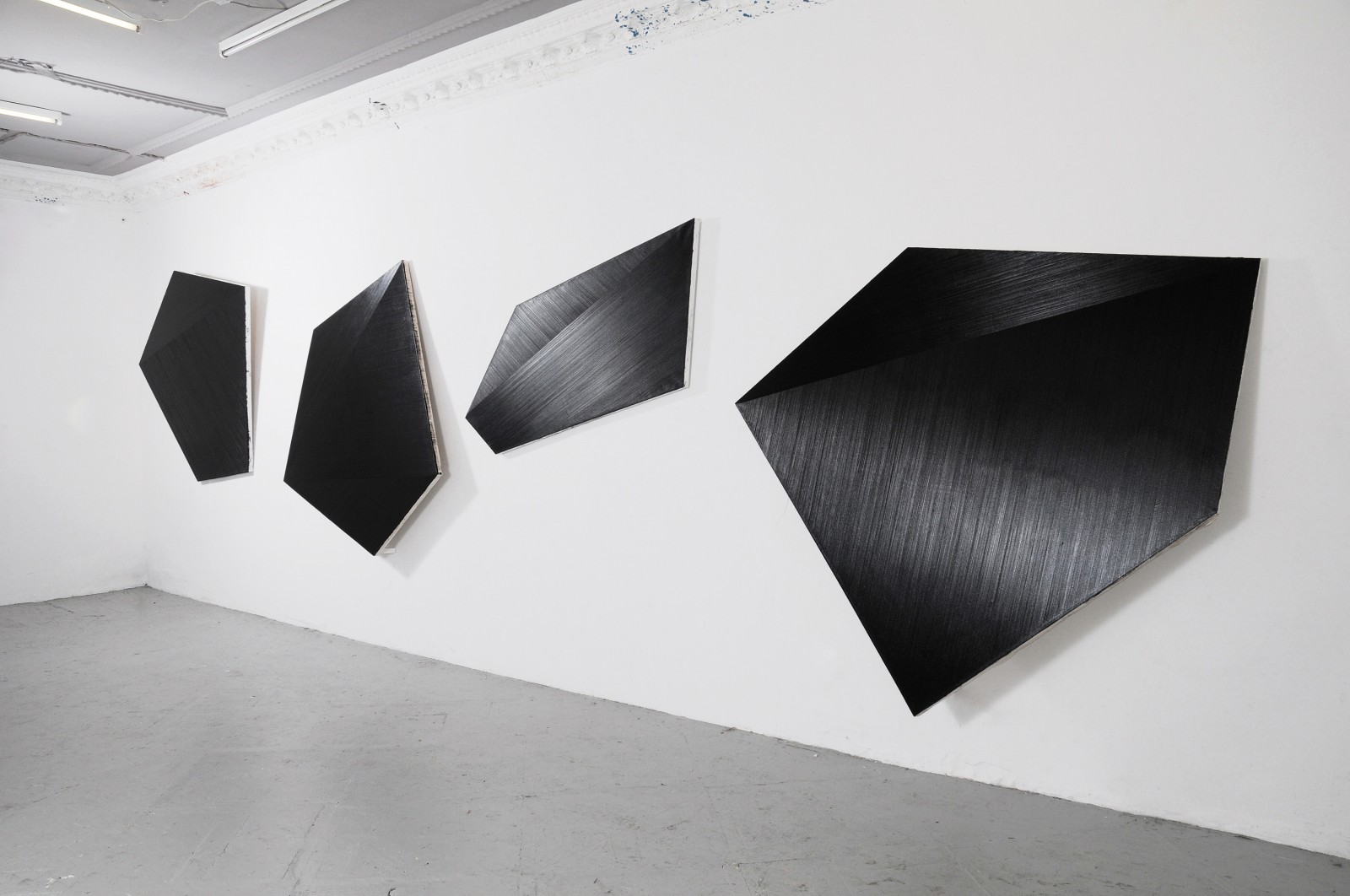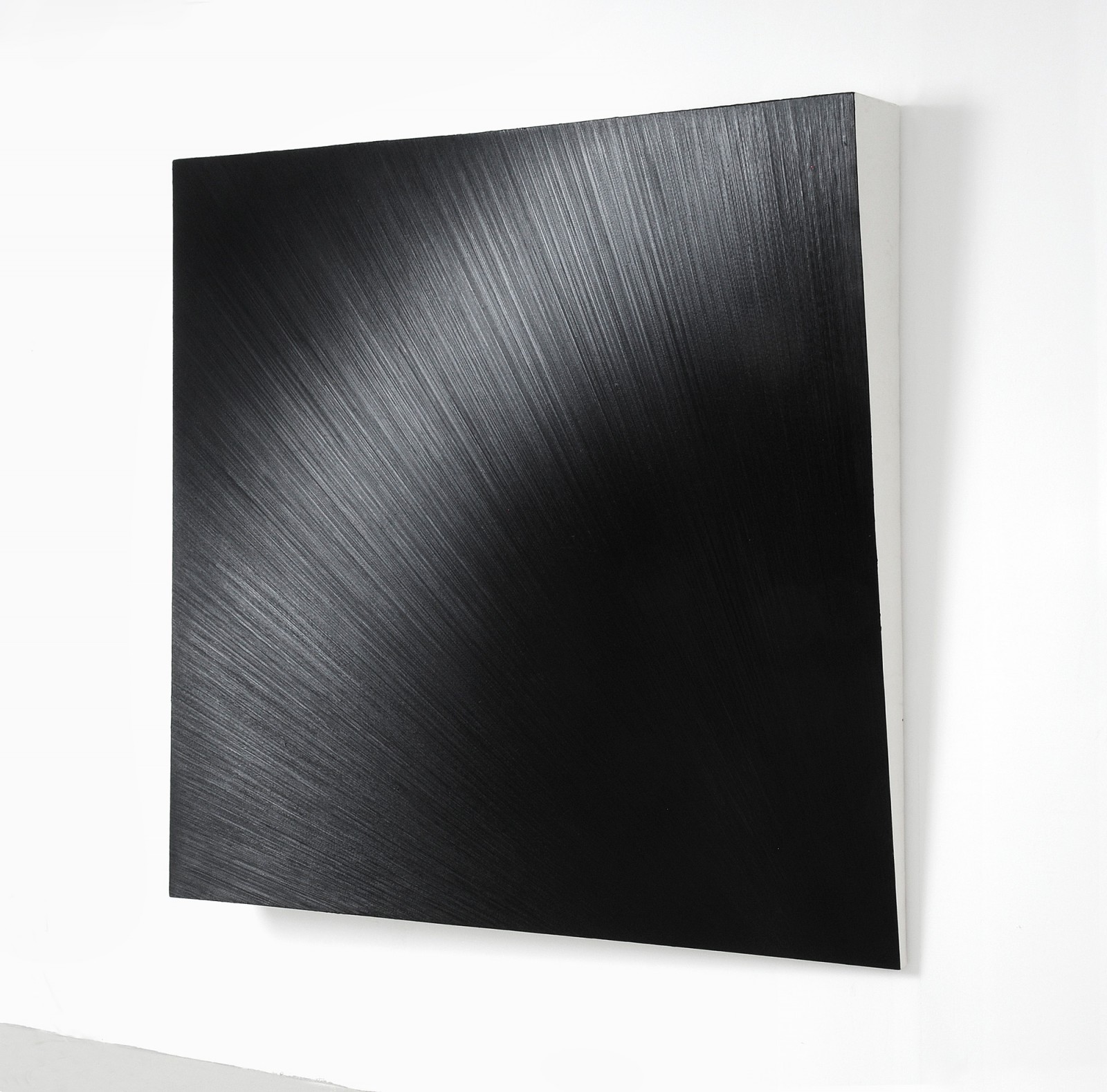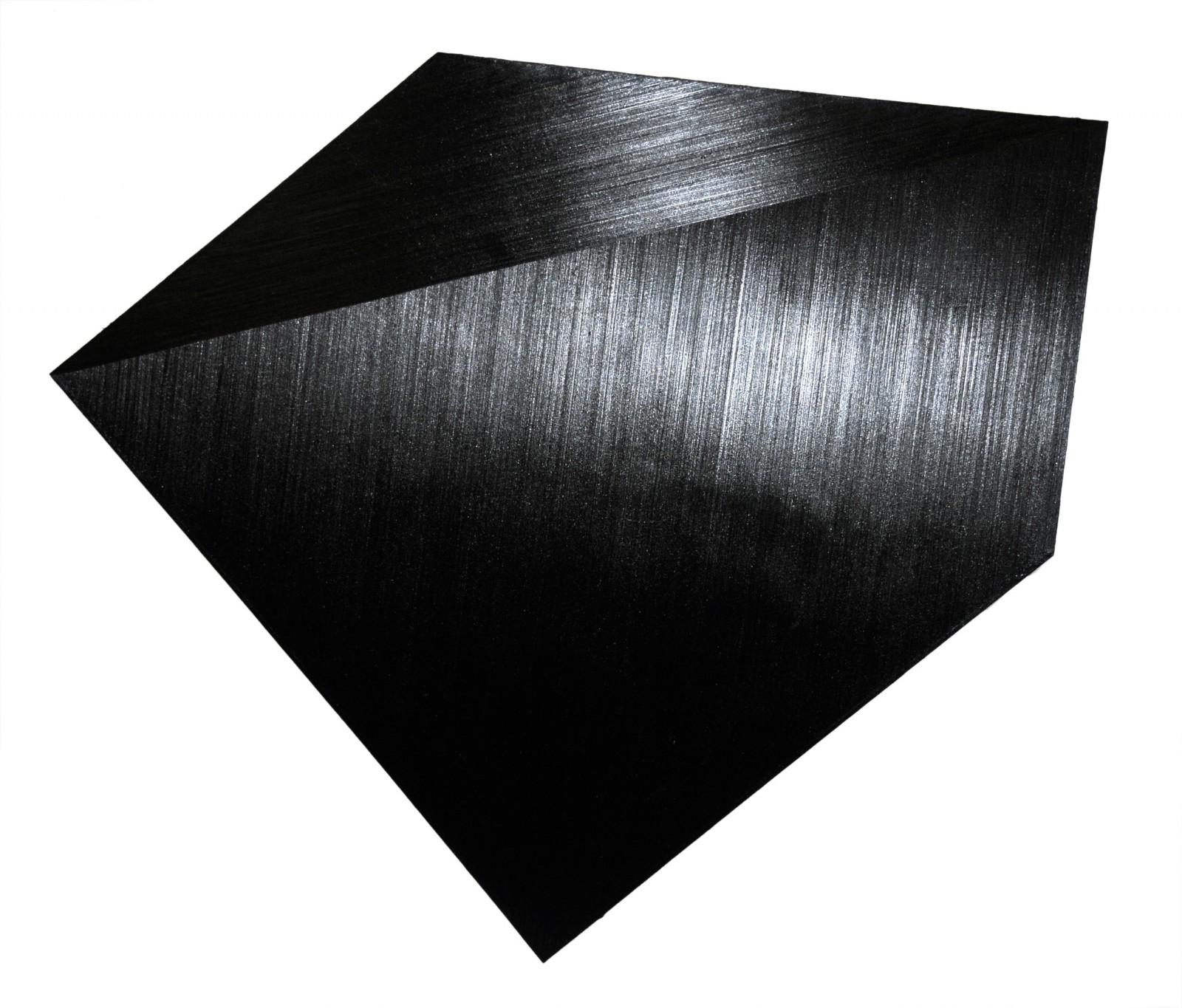
The first pictures from the Lamp Black series, which was continued for several years, came about in 2007 in the artist’s workshop on Łazarza Street in Krakow, located right next to a funeral home. Works from this series were painted with one kind of black oil paint, Winsor&Newton No. 25, which is called Lamp Black. Central to these monochromatic pictures is the shaping of the painting’s surface so that, when struck by various kinds of light, falling from different angles, of various temperatures and intensities, the work creates the illusion of being three-dimensional and multicolored. The pictures from this series have no “right side up” and can be presented any which way, and thus their changing positions and illumination can generate an endless number of compositions and colors. This intention was documented by the artist in the photography session he published in Lamp Black, a book released by Svestka Gallery in Prague in 2007.
The inspiration for the first pictures in this large series was the geometrical shapes of lumps of coal. The following works, which eschewed mimetic associations, focused on breaking through the flatness of the picture, ultimately leading Bujnowski to paint canvases on irregular, multi-angle stretcher bars, which were finally spatially deformed as well. The artist speaks of these pictures as “destroyed by light,” thus indicating that it is factors external to the picture – light, as well as architectural and social space – that determine the shape, the manner of perception, and the comprehension of the canvases hanging on the walls of galleries, apartments, offices, and museums.
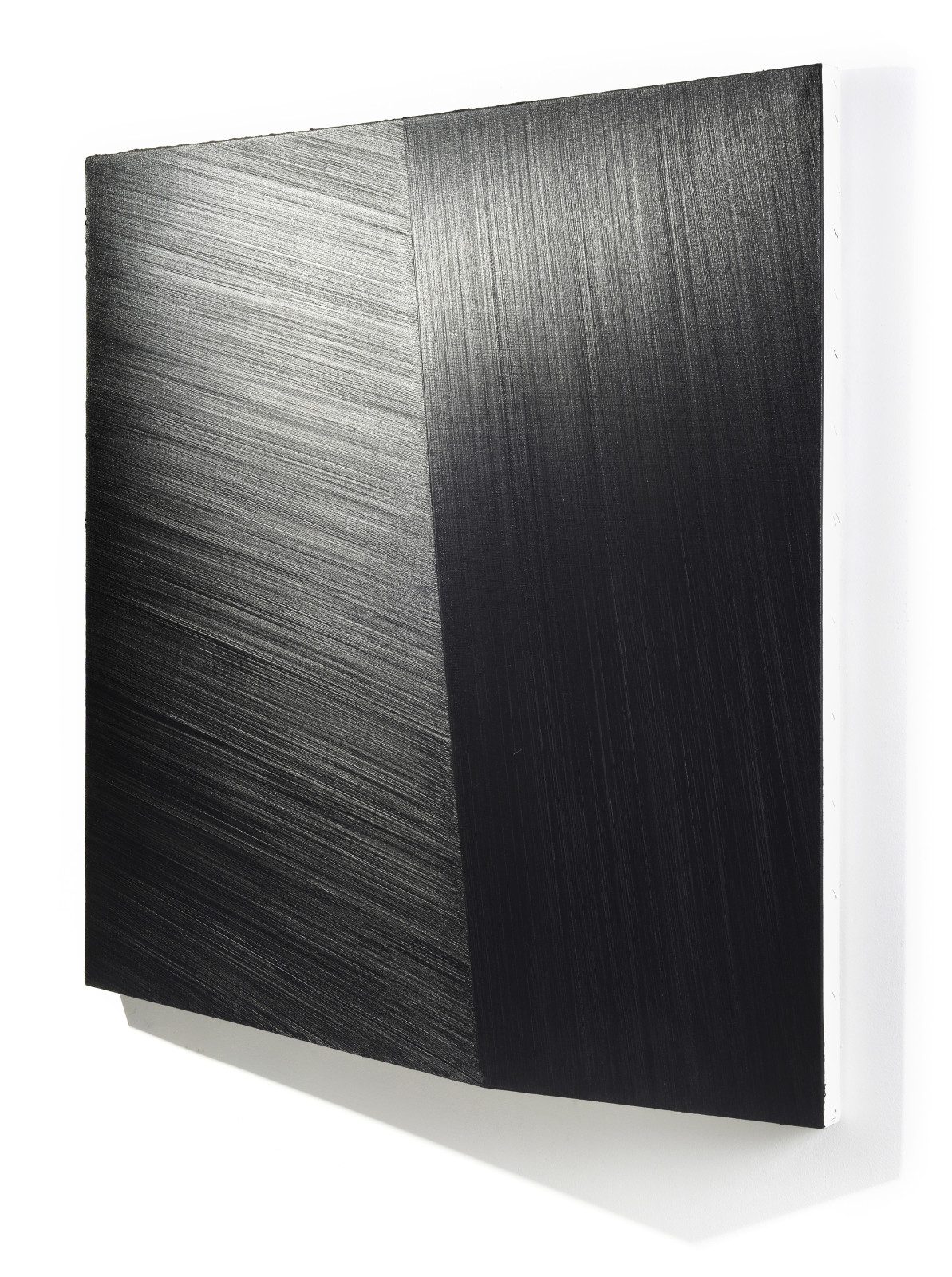
Lamp Black, 2011, oil on canvas, 100 x 100 x 12 cm
